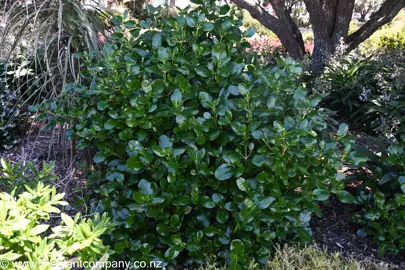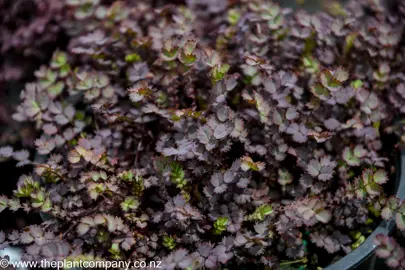Coprosma Poor Knights
Taupata
Coprosma Poor Knights, commonly known as Taupata or Mirror Bush, is a NZ native shrub that carries glossy, green leaves on spreading stems. This groundcover Coprosma typically grows to 50 cm tall and 1 m wide. Coprosma Poor Knights is commonly included in coastal gardens, mass planted either as a groundcover or on a bank, grown around the base of larger trees, or included in a border.












